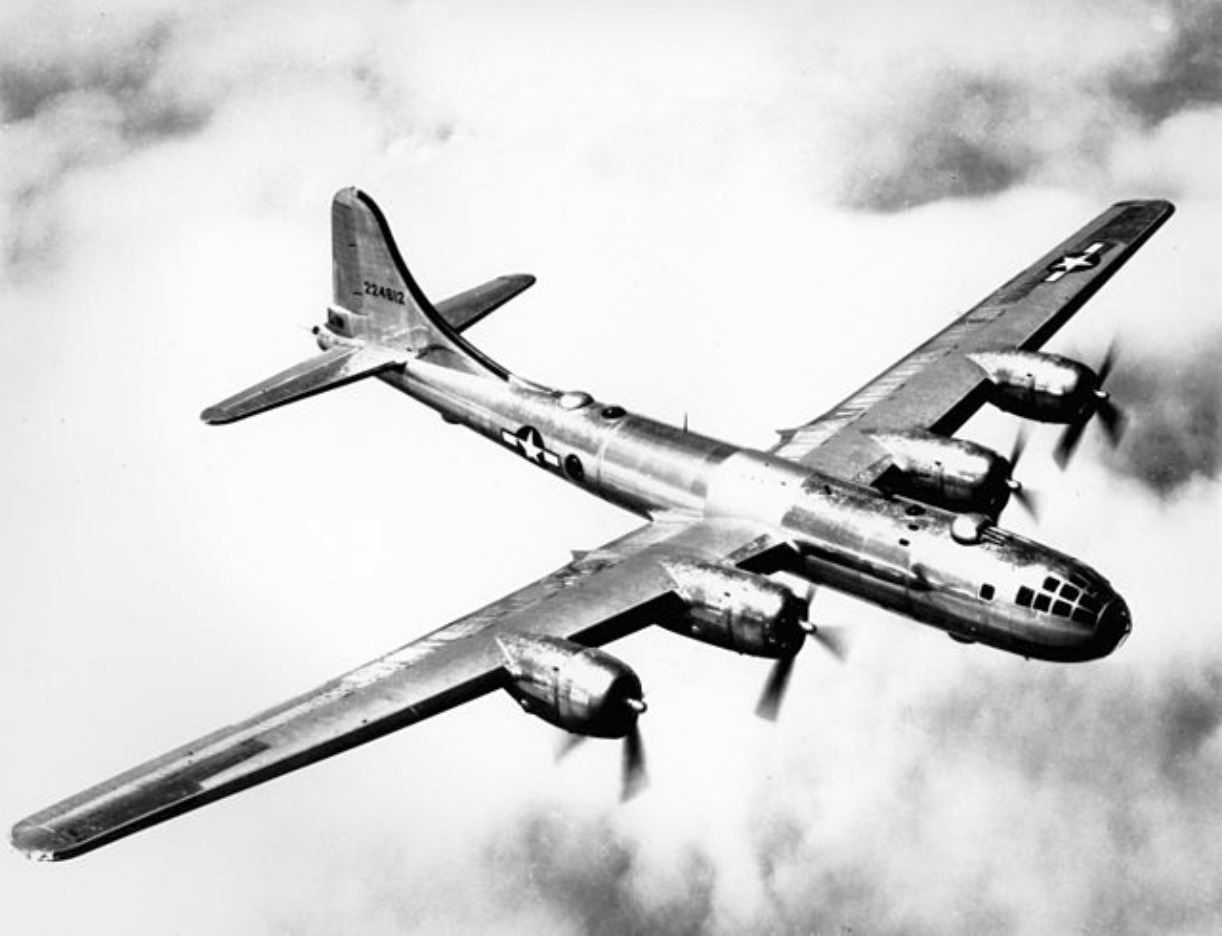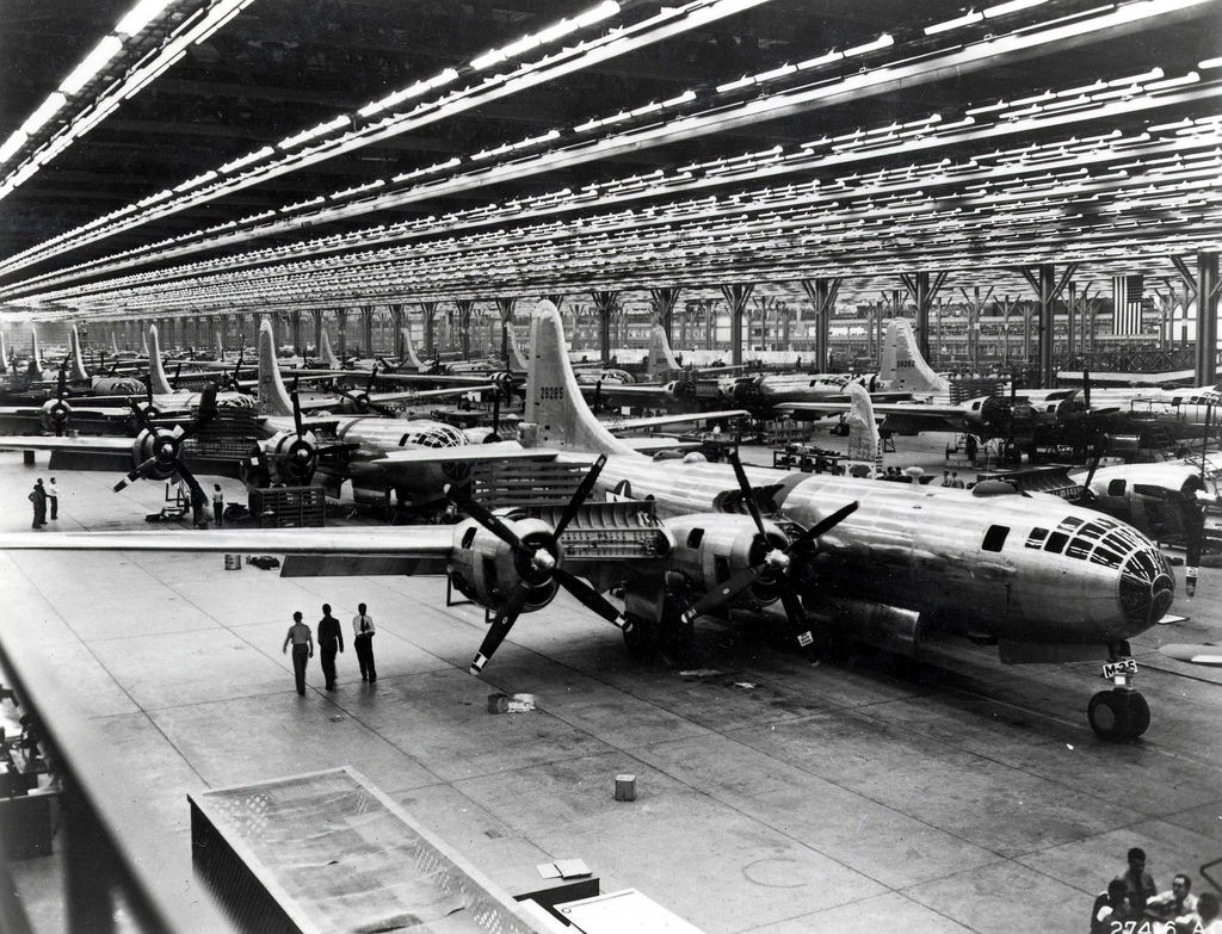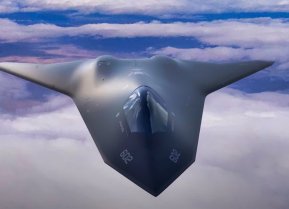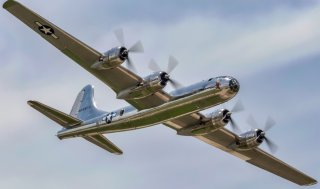The B-29 Superfortress Helped Win World War II: Only 2 Are Airworthy
Today, of the 3,970 B-29s originally produced, only twenty-two remain, mostly in museums. Remarkably, two have been restored to flying condition: "FIFI," which is maintained by the Commemorative Air Force, and "Doc," which was restored after serving as a missile target.
Summary: Today, of the 3,970 B-29s originally produced, only twenty-two remain, mostly in museums. Remarkably, two have been restored to flying condition: "FIFI," which is maintained by the Commemorative Air Force, and "Doc," which was restored after serving as a missile target. These airworthy B-29s serve as flying museums, honoring the legacy of those who built and operated this historic warbird.

B-29 Bomber: Last of the Line
The Boeing B-29 Superfortress could rightfully be described as the aircraft that ended the Second World War. It remains the only bomber to drop atomic bombs in wartime.
The B-29 was designed in 1940 to replace the B-17 Flying Fortress and B-24 Liberator, and the long-range bomber made its maiden flight on September 21, 1942. In December 1943, U.S. Army Air Forces leadership committed the Superfortress to Asia, where its great range made it suited for long over-water flights to Japan from bases in China.
According to the National Museum of the United States Air Force – which is home to the Bockscar, the B-29 that dropped the Fat Man atomic bomb on Nagasaki on August 9, 1945 – during the final two months of 1944, B-29s began operating against Japan from the islands of Saipan, Guam, and Tinian.
The B-29 served beyond World War II. The Superfortress returned to combat in June 1950, and while it was vulnerable to attacks by MiG-15 jet fighters, the bomber was effective against several types of targets throughout the Korean War.

Pricey Warbird – But Effective
Development of the B-29 was the most expensive program of the Second World War. With a price tag of $3 billion for design and production – equivalent to $53 billion in 2024 – it exceeded even the $1.9 billion cost of the Manhattan Project to develop the atomic bomb.
The B-29’s state-of-the-art technology included a pressurized cabin, dual-wheeled tricycle landing gear, and an analog computer-controlled fire-control system that allowed one gunner and a fire-control officer to direct four remote machine gun turrets.
The Soviets Copied It as the Tu-4
During the Second World War, Soviet efforts to develop a modern four-engine heavy bomber lagged greatly behind the West. But four B-29s were forced to make emergency landings in Soviet territory after bombing raids on Japan and Japanese-controlled Manchuria.
Due to the Soviet Union's neutrality in the Pacific War, the bombers were interned by Moscow, despite American requests for their return. The Soviets reverse-engineered the American Superfortress and used it as the basis for the Tupolev Tu-4.
Few Survive, and Only Two Airworthy
In total, 3,970 were produced, but today just twenty-two B-29s are preserved at museums around the world, including the infamous Enola Gay, which dropped the Little Boy atomic bomb on Hiroshima. That aircraft, nose number 82, is now on display at the Smithsonian's Steven F. Udvar-Hazy Center of the National Air & Space Museum near Washington Dulles International Airport.
Just two B-29 Superfortress bombers remain airworthy.They include the B-29 FIFI, which is currently owned by the Commemorative Air Force and based at the Victor N. Agather Hangar at the Dallas Executive Airport. Retired from service in 1958, it was essentially abandoned at the U.S. Navy's China Lake weapons center for 17 years. After both the Air Force (which owned it) and the Navy (which possessed it) signed off, the aircraft was transferred to the Commemorative Air Force for restoration.
A maintenance team joined by volunteers restored all the systems and replaced fuel, oil, and hydraulic hoses. The restoration process reportedly involved cannibalizing parts from other B-29s at China Lake, while some components – notably the new window bubbles – were fabricated. Total restoration to airworthiness took more than three years, and subsequent upgrades have been made in the years since. The aircraft has been displayed at numerous air shows around the country.

The other airworthy B-29 is Doc, a Superfortress built in 1944 and delivered to the Army Air Forces in March 1945. The aircraft didn't see combat before it was retired from service. Like FIFI, it was sent to China Lake, where it was used as a ballistic missile target. The United States Aviation Museum later acquired the aircraft for restoration to flight status, a process that spanned more than two decades. Volunteers dedicated over 450,000 hours to give the old warbird new life.
This spring bomber has been flying around the country in the 2024 B-29 Doc History Restored Tour meant to honor the men and women who designed, built, maintained, and flew the Superfortress.
Author Experience and Expertise: Peter Suciu
Peter Suciu is a Michigan-based writer. He has contributed to more than four dozen magazines, newspapers, and websites with over 3,200 published pieces over a twenty-year career in journalism. He regularly writes about military hardware, firearms history, cybersecurity, politics, and international affairs. Peter is also a Contributing Writer for Forbes and Clearance Jobs. You can follow him on Twitter: @PeterSuciu. You can email the author: [email protected].


